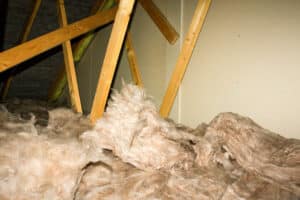How to Identify Mold in Insulation in Your Home
 Mold is a common concern for homeowners, especially in areas where moisture levels are high. One of the less visible but critical areas where mold can thrive is within your insulation. This blog post will guide you on how to identify mold in your insulation and explain how spray foam insulation can be a solution to this pervasive issue.
Mold is a common concern for homeowners, especially in areas where moisture levels are high. One of the less visible but critical areas where mold can thrive is within your insulation. This blog post will guide you on how to identify mold in your insulation and explain how spray foam insulation can be a solution to this pervasive issue.
Signs of Mold in Insulation
- Visible Discoloration: One of the most apparent signs of mold in insulation is discoloration. Look for dark spots or patches on the surface of your insulation material. Mold can appear in an assortment of colors, including black, green, and brown.
- Musty Odors: A persistent musty smell in your home can indicate mold growth. If you notice a musty scent, especially in areas where insulation is present—such as attics, crawl spaces, or basements, it’s worth investigating further.
- Increased Allergies or Respiratory Issues: If you or your family members experience increased allergic reactions or respiratory problems, mold in your insulation may be a contributing factor. Symptoms can include sneezing, coughing, or difficulty breathing.
- Moisture and Humidity: Excess moisture in your home can create an ideal environment for mold. Check for any leaks, water damage, or high humidity levels that might be affecting your insulation.
- Deterioration of Insulation: Insulation that feels damp, crumbly, or has a spongy texture might be compromised by mold. If the insulation is losing its structural integrity, it could be a sign of mold growth.
How Spray Foam Insulation Can Help
If you identify mold in your insulation, addressing the issue promptly is crucial to maintaining a healthy living environment. Spray foam insulation offers several benefits that can help combat mold growth:
- Moisture Barrier: Spray foam insulation creates an effective moisture barrier that helps prevent water intrusion. This can significantly reduce the chances of mold growth, as it keeps the insulation dry and free from excess humidity.
- Air Sealant: Spray foam expands upon application, filling gaps and cracks in walls and ceilings. This airtight seal reduces the potential for air leaks, which can introduce moisture into your insulation and create an environment conducive to mold.
- Durability: Unlike traditional insulation materials, spray foam does not deteriorate over time. Once installed, it maintains its integrity and effectiveness, providing long-term protection against moisture and mold.
- Energy Efficiency: By ensuring that your home is well-insulated and sealed, spray foam insulation can also improve your energy efficiency. This reduction in energy consumption can lead to lower utility bills and a smaller carbon footprint, making it an environmentally friendly choice.
- Easy Installation: Professional installation of spray foam insulation is quick and efficient. An experienced contractor can apply the foam to difficult-to-reach areas, ensuring comprehensive coverage and reducing the likelihood of mold growth.
Final Thoughts
Identifying mold in your insulation is crucial for maintaining a healthy home environment. If you suspect mold growth, it’s essential to address the issue promptly. Spray foam insulation not only helps prevent mold but also enhances the overall energy efficiency of your home. If you’re considering upgrading your insulation, contact Sooner Foam today to learn more about how our spray foam solutions can benefit your home and family.
Stay proactive in protecting your home from mold and moisture—your health and comfort depend on it!
 Mold is a common concern for homeowners, especially in areas where moisture levels are high. One of the less visible but critical areas where mold can thrive is within your insulation. This blog post will guide you on how to identify mold in your insulation and explain how spray foam insulation can be a solution to this pervasive issue.
Mold is a common concern for homeowners, especially in areas where moisture levels are high. One of the less visible but critical areas where mold can thrive is within your insulation. This blog post will guide you on how to identify mold in your insulation and explain how spray foam insulation can be a solution to this pervasive issue.